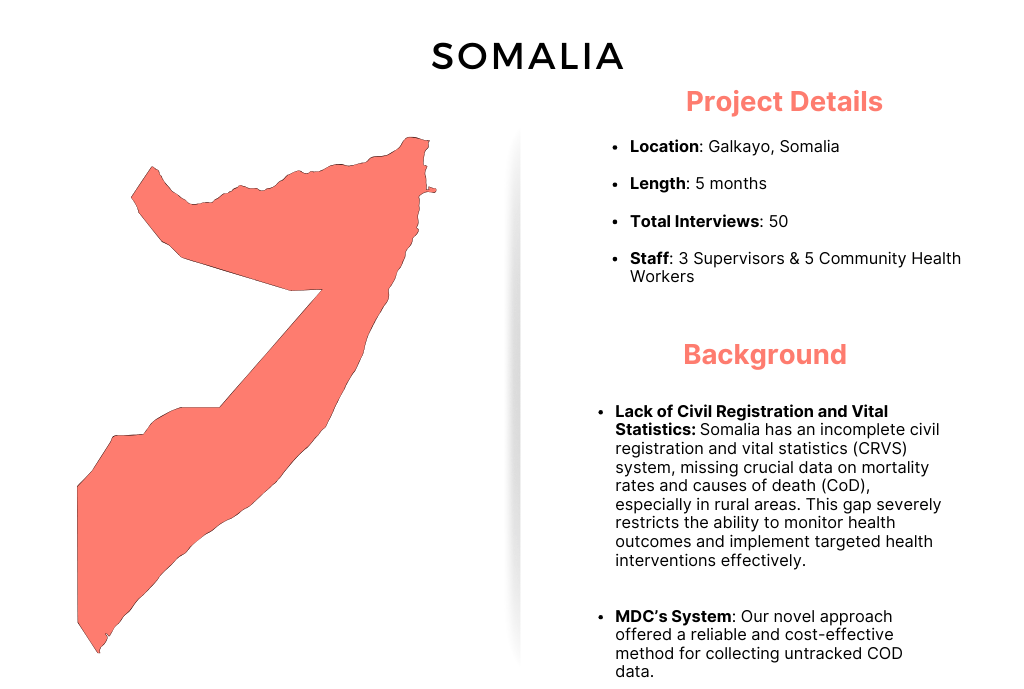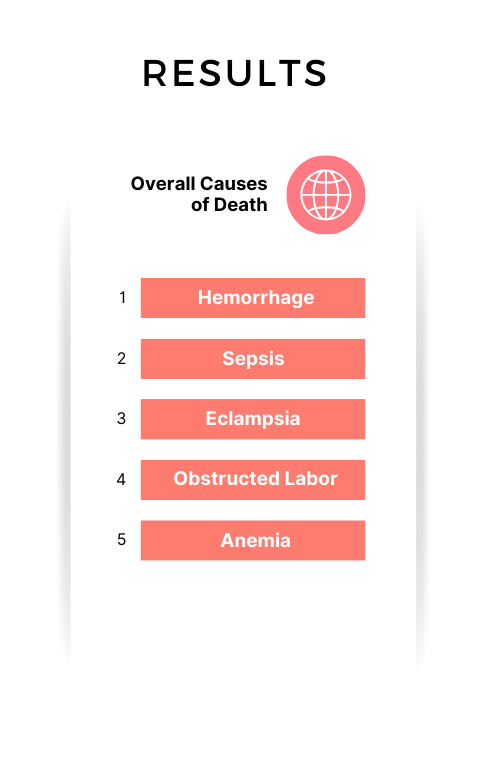

Socio-Cultural Factors in Maternal Health
Cultural sensitivities and gender norms affected the quality and completeness of verbal autopsy interviews, especially concerning topics like HIV/AIDS and women's health issues. Community education and sensitization on maternal health are critical for overcoming stigma and improving health-seeking behavior.
Key Findings
Timing and Location of Maternal Deaths
A notable percentage of deaths occurred en route to the hospital, pointing to barriers in accessing timely and adequate maternal care, especially in emergency situations. Deaths at home were also significant, underlining the need for improved community-based health services and outreach.
Maternal Mortality Causes and Trends
Hemorrhage is the leading cause of maternal deaths, accounting for nearly half of the cases studied. Other significant causes include sepsis and eclampsia, highlighting the need for focused medical interventions and emergency obstetric care.
Demographics of Maternal Deaths
The age of deceased mothers ranged from 20 to 50 years, indicating a wide reproductive age range affected by maternal mortality. A majority of maternal deaths occurred in the hospital setting, suggesting potential gaps in emergency obstetric care and postnatal follow-up.
Respondents’ Perspectives and Health System Insights
Family members, primarily parents and other relatives, provided crucial information during verbal autopsies, emphasizing the importance of community engagement in mortality surveillance. Health system challenges, such as delays in accessing care and limited prenatal and postnatal services, were recurrent themes in the narratives of respondents.

